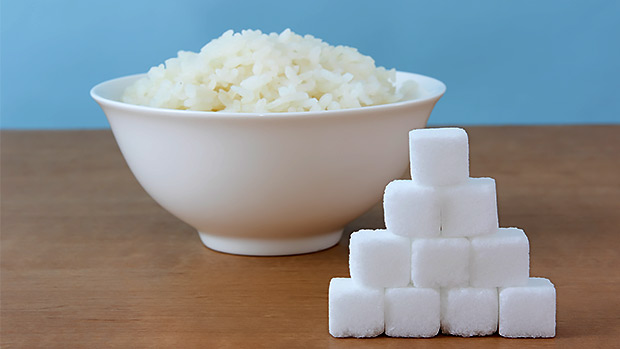- Messages
- 2,405
- Reaction score
- 1,431
- Points
- 113
Harvard Medical School thinks you're nuts for eating white rice. Are they right? Here's the real story.
by TC Luoma
A Harvard Medical School study reported that eating a single serving of white rice has "almost the same effect as eating pure table sugar."
Well, since it's a Hah-vard study, I guess we have to believe them. And really, all you need as evidence is to look at white-rice eating countries like China and Japan and gaze upon all that blubber – two nations of tubbies, most of them spending their days crashing into each other's Baojun and Toyota-made Walmart-style fat scooters as they jockey for position in buffet lines...
Wait a minute, that description doesn't fit those populations at all!
East Asians are typically on the slender side. So how can huge populations for whom white rice is a staple be so slim (and comparatively healthy) if it has almost the same effect as eating table sugar?
If that nutritional comparison were true, Asians would look more like fat Americans, for whom eating table sugar has almost the same effect as eating table sugar.
So what the what is Harvard talking about? I think I see what's needed here. I need to channel the Matt Damon character from Good Will Hunting and go all wicked smart on those skeeves while at the same time stealing their girl.
White Rice is Not the Same as Table Sugar
I see what happened. Harvard is fixating on the glycemic index, which is a measure of the relative ranking of foods based on how they affect blood glucose levels.Sure enough, both white rice and table sugar have a GI in the upper 60s, but perhaps surprisingly, there are plenty of commonly-eaten foods that have higher GIs, things like white bread, most crackers, doughnuts, croissants, and virtually anything in the Fruity Pebbles packaged-breakfast cereals category.
Even so, eating a lot of foods that rank moderately high on the GI scale like table sugar and white rice could indeed lead to diabetes and tubbiness. However, as far as white rice goes, hardly anybody eats bowls and bowls of plain white rice unless they're on the Bataan Death March and it's all their cruel captors will give them.
Instead, people eat white rice with meat and vegetables and tasty sauces, which pretty much means that the individual GI's of those foods don't much matter.
It's called the "mixed-meal effect" and refers to how a combination of different foods digests more slowly than they might otherwise. This results in a less severe and more gradual rise of blood sugar, which is good for thwarting Type 2 diabetes and pudginess.
Now I know Harvard would prefer that you substitute brown rice for your white rice because it has a lower GI, but as you see, that argument is flawed. Beyond that, there are plenty of reasons to choose white rice over brown, anyhow.
White vs. Brown Rice

Brown rice DOES contain more nutrients than white, but the differences between the two aren't that dramatic. Consider the following:
- 1 cup of white rice contains 4.2 grams of protein while a cup of brown rice contains 5 grams.
- 1 cup of white rice contains 15.8 mg. of calcium while a cup of brown rice contains 19.5 mg.
- 1 cup of white rice contains 2.3 mg. of niacin while a cup of brown contains 3.0 mg.
- 1 cup of white rice contains 19 mg. of magnesium while a cup of brown contains 84 mg.
- 1 cup of white rice contains 68 mg. of phosphorus while a cup of brown contains 162 mg.
Still, brown rice is clearly better, nutrient-wise, than white, so why shouldn't we always choose it over its pale counterpart?
Well, even though brown rice contains more nutrients than white rice, it's almost a moot point because the bran that makes brown rice brown contains phytic acid, which "grabs onto" certain minerals in the rice (and the minerals in anything else you ate with the rice), along with inhibiting some of the enzymes you need to digest food.
That means that many of the extra nutrients in brown rice are inaccessible to the body, anyhow.
And sure, brown rice contains more fiber, but the fiber is insoluble and insoluble fiber ain't what it's cracked up to be. Insoluble means it doesn't digest, so yeah, it adds bulk to your stool, but so can a handful of Tide Pods. If you can't digest something, it leads to gas formation while possibly irritating your bowels.
White rice, however, is one of the most innocuous, soothing things you can introduce to your gut. And if you're worried about the arsenic that seems to be inextricably associated with rice, white rice has roughly 80% less arsenic than brown.
So Harvard, how do you like dem apples?

